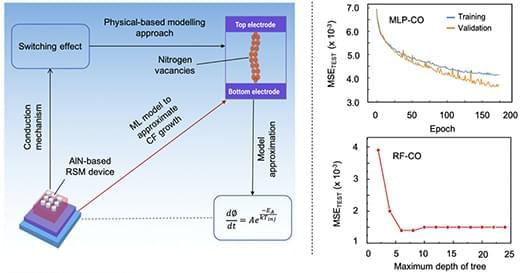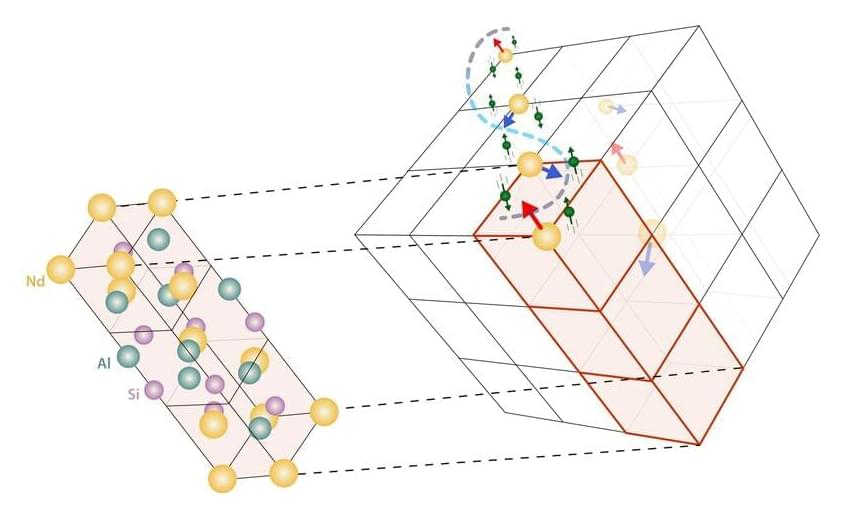MIT researchers suggest a way to protect qubit states using a phenomenon called many-body localization (MBL) — a peculiar phase of matter that is unlike solid or liquid, and never reaches equilibrium.
Resistive-switching memory (RSM) is an emerging candidate for next-generation memory and computing devices, such as storage-class memory devices, multilevel memories and as a synapse in neuromorphic computing. A significant challenge in the global research efforts towards better energy technologies is efficient and accurate device modeling. Now, researchers have created a new modeling toolkit which can predict the current of a new type of memory with excellent accuracy.
Intel’s new approach to chips, details.
The new Alder Lake chips, however, are aspiring to be far more ambitious. Intel teased a full range of chips from 9W to 125W that would utilize the new hybrid approach, combining multiple high-end performance cores with efficient cores for a wider range of power when users need it and efficiency when running less strenuous tasks.
Given that Intel’s announcements today largely focused on the architectures, there are no hard product announcements, but the company did tease several planned Alder Lake SoCs that would utilize the new cores. Those include a desktop SoC with eight performance cores, eight efficiency cores, and integrated memory, graphics, and I/O; a laptop SoC with six performance cores, eight efficiency cores, imaging, Thunderbolt 4 support, memory, I/O, and more powerful Xe graphics all integrated in; and an ultramobile-focused SoC with two performance cores and eight efficiency cores.
To make all that work together, Intel also showed off its new scheduling technology, Intel Thread Director, which is designed to better handle how activity is assigned to performance or efficiency cores depending on need. For example, Thread Director can automatically assign high-priority tasks to performance cores, while offsetting background threads to efficiency cores. Intel also says that it’s collaborating with Microsoft specifically to ensure that Thread Director is optimized for “the best performance on Windows 11.”
Samsung Pay can now store your coronavirus vaccination card on your smartphone in the U.S., thanks to the CommonHealth app on the Play Store.
After Google added support for COVID-19 vaccination cards to Google Pay, Samsung has now announced that it is doing the same with Samsung Pay. Users of the service will be able to load their SMART Health Cards displaying their COVID-19 vaccination status within Samsung Pay. This will allow U.S. consumers to download a verifiable digital version of their vaccination record from pharmacies or health systems and securely store in on their smartphone via the CommonHealth app on supported Samsung Galaxy smartphones.
The unusual feature, measuring 3,000 light-years long, could represent a previously unknown type of galactic substructure.
The 23rd SpaceX
Commonly known as SpaceX, Space Exploration Technologies Corp. is a private American aerospace manufacturer and space transportation services company that was founded by Elon Musk in 2002. Headquartered in Hawthorne, California, the company designs, manufactures, and launches advanced rockets and spacecraft.
An exotic form of magnetism has been discovered and linked to an equally exotic type of electrons, according to scientists who analyzed a new crystal in which they appear at the National Institute of Standards and Technology (NIST). The magnetism is created and protected by the crystal’s unique electronic structure, offering a mechanism that might be exploited for fast, robust information storage devices.
The newly invented material has an unusual structure that conducts electricity but makes the flowing electrons behave as massless particles, whose magnetism is linked to the direction of their motion. In other materials, such Weyl electrons have elicited new behaviors related to electrical conductivity. In this case, however, the electrons promote the spontaneous formation of a magnetic spiral.
“Our research shows a rare example of these particles driving collective magnetism,” said Collin Broholm, a physicist at Johns Hopkins University who led the experimental work at the NIST Center for Neutron Research (NCNR). “Our experiment illustrates a unique form of magnetism that can arise from Weyl electrons.”
Protests and meme campaigns weren’t enough, so now Jeff Bezos’ company is turning to lawsuits.
Following an unsuccessful GAO protest and meme campaigns, Jeff Bezos’s space company is suing NASA over a lunar lander contract for the Human Landing System.
There are actually two Super Heavy boosters in the shot.
SpaceX’s Super Heavy rocket looks big, even from space.
On Aug. 9 Maxar Technologies’ WorldView-3 satellite snapped a great shot of SpaceX’s “Starbase” facility in South Texas, where the company is building and testing its Starship deep-space transportation system.
A new project will use the electric field in an accelerator cavity to try to levitate a tiny metallic particle, allowing it to store quantum information.
Quantum computing could solve problems that are difficult for traditional computer systems. It may seem like magic. One step toward achieving quantum computing even resembles a magician’s trick: levitation. A new project at the U.S. Department of Energy’s Thomas Jefferson National Accelerator Facility will attempt this trick by levitating a microscopic particle in a superconducting radiofrequency (SRF) cavity to observe quantum phenomena.
Typically at Jefferson Lab and other particle accelerator facilities, SRF cavities enable studies of the atom.








